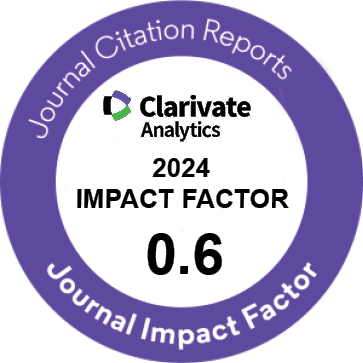| Original Article | |
| Related Risk Factors for Pelvic Floor Disorders in Postpartum Women: A Cross-sectional Study | |
| Negin Sodagar1, Fariba Ghaderi1, Tabassom Ghanavati1, Fareshteh Ansari2, Mohammad Asghari Jafarabadi3 | |
| 1Department of Physiotherapy, Faculty of Rehabilitation, Tabriz University of Medical Sciences, Tabriz, Iran 2Razi Vaccine and Serum Research Institute, Tehran, Iran 3Road Traffic Injury Research Center, Tabriz University of Medical Sciences, Tabriz, Iran |
|
|
IJWHR 2022; 10: 051-056 DOI: 10.15296/ijwhr.2022.10 Viewed : 2428 times Downloaded : 2540 times. Keywords : Pelvic floor disorders, Risk factors, Post-partum |
|
| Full Text(PDF) | Related Articles | |
| Abstract | |
Objectives: Pelvic floor disorders (PFDs) during pregnancy and after delivery, and related risk factors are still debatable topics for research. Thus, the aim of the present study was to assess the probable risk factors associated with PFDs in Iran. Materials and Methods: This cross-sectional study was conducted in two state and private hospitals in Tabriz, Iran from the 1st of June to the 31st of August, 2018. The participants were 650 postpartum women, aged between 15 and 47 years six months after delivery. The type of delivery, type of hospital, history of episiotomy and induction, anesthesia, multiparity, the mother’s birth age, the infant’s weight and head circumference, the mother’s weight gain during pregnancy, and a wide variety of probably related risk factors were studied based on the study objective. According to their answer to the questions of PFDs, 147 women responded yes and completed the Pelvic Floor Distress Inventory-20 questionnaire. Results: Between the investigated risk factors, type of the hospital (OR: 0.27, CI: 0.126-0.564) and the amount of the mother’s weight gain during pregnancy (OR: 1.066, CI: 1.024-1.109) were significantly associated with PFDs. Finally, the number of PFDs and severity of dysfunctions according to PFDI-20 were higher in state hospitals, and excessive weight gain of the mother during pregnancy was related to the higher incidence of PFDs. Conclusions: Type of the hospital and the mother’s weight gain during pregnancy are the only two related risk factors in this study. This study was the first one to discuss the type of the hospital in such related risk factor studies. Accordingly, it is predictable that better supervision of medical attends in state hospitals is highly important for decreasing the rate of PFDs after delivery. |
Cite By, Google Scholar
Google Scholar
PubMed
Online Submission System
 IJWHR ENDNOTE ® Style
IJWHR ENDNOTE ® Style
 Tutorials
Tutorials
 Publication Charge
Women's Reproductive Health Research Center
About Journal
Publication Charge
Women's Reproductive Health Research Center
About Journal
Aras Part Medical International Press Editor-in-Chief
Arash Khaki
Mertihan Kurdoglu Deputy Editor
Zafer Akan























